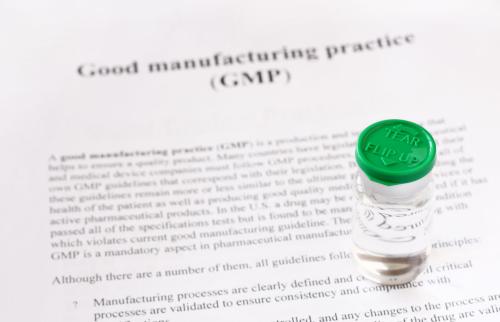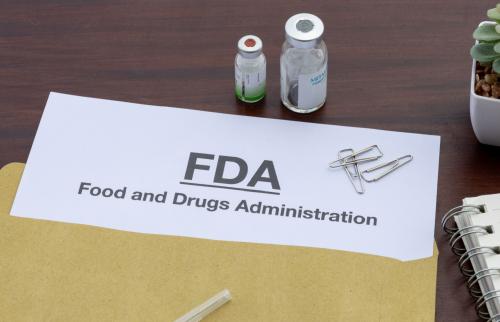The following testimony was given to the Senate Special Committee on Aging on October 8, 2025. Video of the hearing and full written testimony are available here. Please note that the full 15-page written testimony and the shortened oral testimony presented below are distinct. Following her testimony, Senators submitted to her questions for the record. Those questions covered a wide range of prescription drug policy topics: the role of transparency initiatives, prioritization of essential drugs, domestic industrial parks, impacts on rural providers, and predictive analytics and technology. Wosińska’s responses to these questions can be found in the attached PDF.
Chairman Scott, Ranking Member Gillibrand, and distinguished members of the Committee, thank you for the opportunity to testify at this important hearing.
My name is Marta Wosińska, and I am a senior fellow at the Brookings Institution, where I specialize in the economics of prescription drug markets.
Today, I speak in my personal capacity, reflecting nearly 15 years of studying drug supply chain issues—from within the government and outside—and with no financial stake in the outcome.
Over all these years, I have observed what policy solutions catch the interest of lawmakers. I have seen that many of the solutions that resonate sound good, but they don’t address the problem that lawmakers claim they want to solve.
So, today, as we talk about solutions, I urge you to ask the following questions:
- What specific problem is the solution meant to address?
- What else is needed for the solution to succeed?
- How do we handle unintended consequences?
- And—is this the most efficient and cost-effective path?
Because when you ask those questions, you will be best prepared to design policies that not only do the job well for patients, but also assure that taxpayer dollars are used wisely.
For instance, if persistent drug shortages in hospitals are the top priority, durable solutions require shifting hospital incentives so that reliability, not just low cost, is valued. Transparency to hospitals around supply chain reliability will be important, and you will want to keep far away from tariffs unless you fix various payment systems.
If the concern centers on China, then the focus should be on antibiotics and—for pretty much any other drug—the focus should shift upstream, away from pharmaceutical production steps, towards chemicals that are not regulated by FDA. And you will also want to think about how to leverage India in de-risking from China.
If the objective is to increase domestic drug manufacturing—which btw is a solution to supply concerns, not the problem—then any new facility counts as progress, regardless of whether it addresses areas of critical need or shortage risk. If domestic manufacturing is the goal, then you may not pay as much attention to whether policies designed to promote onshoring—like tariffs—could destabilize supply.
And what if we are concerned that weak FDA oversight abroad creates opportunities for defective drugs making their way to American patients? Onshoring could help because we would be building newer, more automated facilities, and FDA would have an easier access to those facilities.
But let’s be realistic—onshoring will require government support to undo the economic forces that moved production offshore—in fact a lot of government support. With constrained budgets, this means policymakers should prioritize. So, I would urge you to consider that essential medicines and chokeholds with China are much more pressing onshoring targets than Indian-made statins or blood pressure medications.
Fortunately, we do have other options for addressing product defect risks in commonly used medications. FDA can create greater quality assurance by increasing unannounced inspections and Congress can support FDA by providing more resources.
But we would need to do more because many industry observers and compliance professionals tell me that the current inspection-based model for oversight is not enough.
This is where I urge this committee to consider the proposal I published this morning, which would require every importer to designate a qualified person—based in the U.S.—with personal responsibility for verifying that each batch meets quality standards. Mandatory product testing would be part of that process.
This system is already working for drugs in Europe and has precedent in U.S. food regulations and other U.S. sectors like finance where CFOs must personally certify financial disclosures.
To conclude, let me reiterate that lasting policy must focus on clearly defining the problem, aligning incentives so the right behaviors follow, and adapting proven, practical solutions from other settings facing similar challenges. When reforms are grounded in clear objectives and matched to the challenge, they will best protect patients and ensure prudent use of public resources.
Thank you again for inviting me to participate. I look forward to your questions and to this Committee’s leadership in advancing meaningful reforms that will enhance both the quality and reliability of America’s drug supply.
The Brookings Institution is committed to quality, independence, and impact.
We are supported by a diverse array of funders. In line with our values and policies, each Brookings publication represents the sole views of its author(s).






Commentary
TestimonyMarta Wosińska’s testimony before the Senate Special Committee on Aging
October 9, 2025